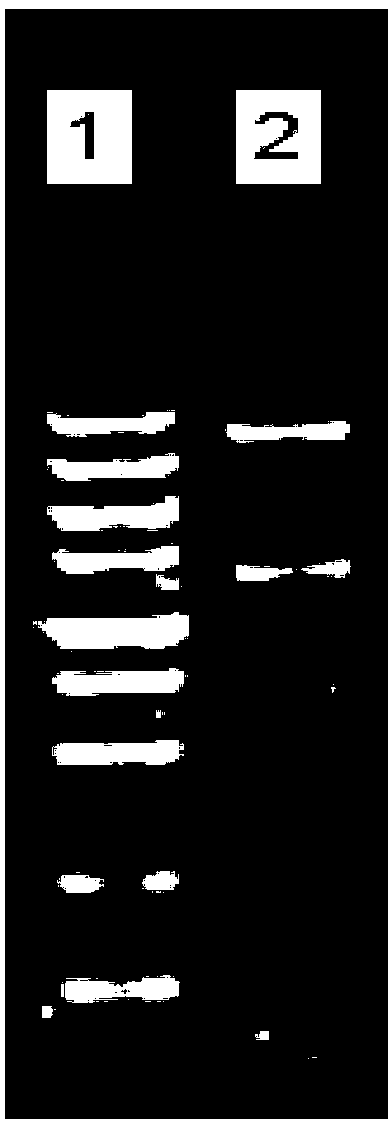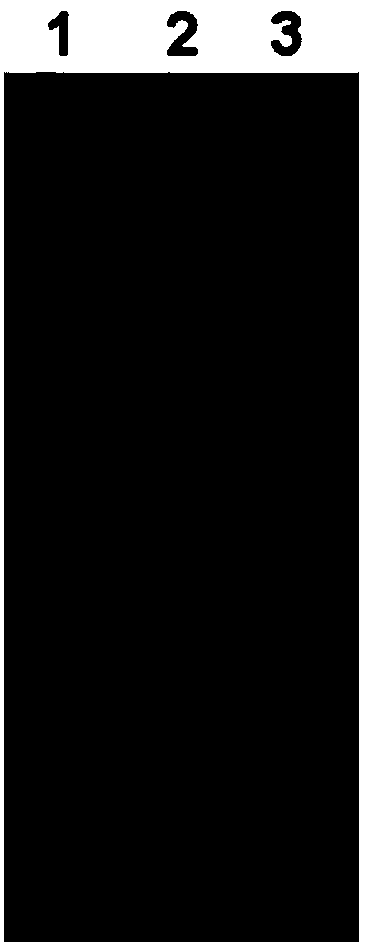Ethyl carbamate hydrolase gene, protein coded thereby and application
A technology of urethane and hydrolase, which is applied in the fields of hydrolase, application, and genetic engineering, and can solve the problems of cumbersome protein purification steps and small enzyme production by wild bacteria
- Summary
- Abstract
- Description
- Claims
- Application Information
AI Technical Summary
Problems solved by technology
Method used
Image
Examples
Embodiment 1
[0025] Example 1: Cloning of UH gene from the genome of Bacillus fusiformis
[0026] A single colony of Bacillus fusiformis activated by streaking on the plate was inoculated into LB liquid medium and cultured for about 15 hours in the logarithmic growth phase, and the bacteria were collected. Refer to the steps of the genome extraction kit to extract the genomic DNA. Design specific primers based on the protein sequence alignment results, including forward primer 1 and reverse primer 2, forward primer 1 plus Nde I, and reverse primer 2 plus BamH I, as follows:
[0027] Forward primer 1: 5'-GGA ATT CCA TAT GAT GCG GAC ATT GCT GTA CGT-3'
[0028] Reverse primer 2: 5'-CGG GAT CCT TAG ATA TTA GCA AAA ATA TTT GGT TTT-3'
[0029] The genomic DNA of Bacillus fusiformis lysine was used as a template, and the above-mentioned specific primers were used as primers to amplify the UH enzyme gene. For PCR amplification, Takara kit was used, and 34 cycles were amplified by referring to its instru...
Embodiment 2
[0032] Example 2: Construction of expression vector and expression system
[0033] The cloning vector pMD19-T-UH and pET20b(+) plasmids were digested with Nde I and BamH I respectively, and the digested products were separated by 0.8% agarose gel electrophoresis, and DNA fragments of 1.4kb and 3.7kb were recovered respectively After the ligase ligation reaction, the pET20b(+)-UH expression vector was constructed, the ligation product was transformed into E. coli BL21(DE3) competent cells, the positive clone was obtained by the ampicillin plate selection, and the recombinant plasmid was cultured and extracted. After Nde I and BamH I double enzyme digestion verification and sent to Shanghai Shenggong Biological Company for sequencing to prove that it contains the correct insert (such as figure 2 As shown), the exogenous expression system of recombinant urethane hydrolase E.coli BL21(DE3) / pET20b(+)-UH was obtained.
Embodiment 3
[0034] Example 3: Recombinant expression of carbamate hydrolase
[0035] A single colony of genetically engineered bacteria E.coli BL21(DE3) / pET20b(+)-UH was picked and inoculated in 25mL LB liquid medium containing 50μg / mL ampicillin, and cultured overnight at 37°C with shaking. Transfer to the above liquid medium according to the 2% inoculum volume on the next day, and cultivate to the bacteria concentration OD 600 =0.6, add IPTG to a final concentration of 0.1mmol / L for induction, culture for 15h, collect the bacteria by centrifugation, break the wall by ultrasound, take the supernatant by centrifugation, and measure the enzyme activity (such as Zhao C, Kobashi K (1994) Purification and Characterization of iron-containing urethanase from Bacillus licheniformis. Biol Pharm Bull17(6): 773-778 in the method for determining enzyme activity) and detect protein expression by SDS-PAGE. From image 3 It can be seen that compared with the empty vector lane without the target band conn...
PUM
 Login to View More
Login to View More Abstract
Description
Claims
Application Information
 Login to View More
Login to View More - R&D
- Intellectual Property
- Life Sciences
- Materials
- Tech Scout
- Unparalleled Data Quality
- Higher Quality Content
- 60% Fewer Hallucinations
Browse by: Latest US Patents, China's latest patents, Technical Efficacy Thesaurus, Application Domain, Technology Topic, Popular Technical Reports.
© 2025 PatSnap. All rights reserved.Legal|Privacy policy|Modern Slavery Act Transparency Statement|Sitemap|About US| Contact US: help@patsnap.com



